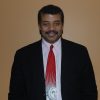Magnetic Personalities: Neil deGrasse Tyson
An astrophysicist by trade, Neil deGrasse Tyson has become something of a pop culture icon over the past few years. He is perhaps best known for acclaimed miniseries Cosmos: A Spacetime Odyssey, which was a revisioning of his mentor Carl Sagan’s program of the same name. Tyson’s long and accomplished career, coupled with his celebrity have made him and ambassador for science to curious people of all ages.
As mentioned above, Tyson’s main area of study is astrophysics, which would of course include the study of magnetic fields and the universe’s magnetism. Let’s take a closer look at this magnetic personality’s remarkable life.
Early Life
Neil deGrasse Tyson was born in New York City in 1958 and grew up in the Bronx where he attended public school. His interest in astronomy came early. When he was nine years old, Tyson visited the Hayden Planetarium and instantly fell in love with all things space. Astronomy would prove much more than a hobby for Tyson. He was insatiable in his quest for knowledge and frequently attended classes and lectures on top of his high school curriculum. His thirst for knowledge was so impressive that he could not keep it to himself. At 15 years old, Tyson began giving his own lectures on the topic.
By the time he was ready to graduate high school, Tyson had already made a name for himself in the astronomy community. He was courted by famed astrophysicist Carl Sagan, in hopes of attracting the young Neil deGrasse Tyson to study with him at Cornell University. Sagan invited Tyson to visit him on campus. Tyson recalls that encounter, explaining "I already knew I wanted to become a scientist. But that afternoon, I learned from Carl the kind of person I wanted to become."
Career
Before pursuing his PhD at Columbia, Neil deGrasse Tyson served as a lecturer of astronomy at the University of Maryland. After completing his dissertation, Tyson wound up serving as the director of his childhood home away from home, the Hayden Planetarium. In 2001, he was appointed to the Commission on the Future of Aerospace Industry and the President Commission on Implementation of United States Space Exploration Policy.
Since then, Tyson has been instrumental in bringing science, name astronomy, to the public spotlight. In addition to 2014’s Cosmos: A Spacetime Odyssey, Tyson has also hosted Nova ScienceNow and StarTalk, as well as published numerous books and articles on astrophysics.
Neil deGrasse Tyson and Magnetism
What is perhaps Tyson’s best-known quality is his ability to blend scientific lectures with humor, poetic language, and overall enthusiasm. If you’ve ever seen his television programs or listened to his podcasts, you’re already aware of how passionate he is.
In his role as director of the Hayden Planetarium, Tyson host a number of videos on various scientific topics. One of our favorite videos is his explanation of Earth’s magnetic field and how it creates the Northern Lights. Again, Tyson’s narration style shows a deep love for science and listening to him makes anyone passionate about it, too. If one episode of Cosmos: A Spacetime Odyssey, Tyson explains how magnets work. He notes that science often feels like “magic,” and how wondrous the marvels of the universe can often feel.
At Apex Magnets, we can certainly understand the seemingly magical quality of magnets and other areas of science. While Neil deGrasse Tyson’s work does not only deal with magnetism, he is certainly one of its champions, understanding that all areas of physical science are important to our understanding of the universe.
Tyson is one of our favorite magnetic personalities, but there are plenty more to explore! Visit the Magnetic Personalities section of our blog to read about other famous scientists—including William Gilbert, Franz Mesmer, and Mary Fairfax Somerville—and how they’ve advanced our understanding of magnetism.

